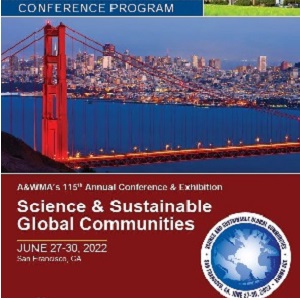Back
Technical Poster
Air Measurements, Monitoring, and Controls (AA)
Session : Technical and Student Poster Session
1165570 - The Analysis of PM 1.0 and Associated of Elements in a Roadside Area
Tuesday, June 28, 2022
10:45am – 12:15pm PT
Location: Exhibit Hall
- JL
Jin-Hong Lee, Ph.D
Professor
Chungnam National University
Daejeon, Taejon-jikhalsi, Republic of Korea
Primary Author(s)
In this study, the characteristics of PM 1.0 and associated elements were investigated at a roadside area with high traffic density in Daejeon, Korea. BC, sulfate, nitrate, ammonium, and 16 trace metals were determined precisely. Based on our measurement data, we attempted to elucidate the distribution characteristics of PM 1.0 and the chemical species. The source types and relative contribution of each source in the study area were then estimated and quantified using PMF receptor model. Pairwise comparison between PM 1.0 concentrations indicates that there was no statistically significant difference between the mean concentrations of PM 1.0 according to varying days of the week. As PM 1.0 concentrations on Sunday were slightly lower than on other days, it can be concluded that vehicular sources in the study area are also significant contributors to variation of PM 1.0 concentrations, in addition to long-range transferred particles. The concentrations of major species (e.g., BC, sulfate, nitrate, and ammonium) were apportioned by 79.7 ± 6.3% of the PM 1.0. The strong relationships between PM 1.0 and their major species (e.g., BC, sulfate, nitrate, and ammonium) were indicated by their correlation coefficients of 0.52–0.96. The compound forms of sulfate and the higher correlation (r = 0.81) between BC and sulfate in PM 1.0 at the study area suggest that the species concentrations were influenced by pollutants emitted in the study area and trans-boundary pollutants from outside of the study area. A total of six source types were identified to be important including secondary aerosol (54.1%), vehicle exhaust (21.2%), re-suspended soil-road dust (9.6%), fossil fuel combustion (9.1%), biomass-burning (3.3%), and industrial activities (2.6%).

.jpg)
